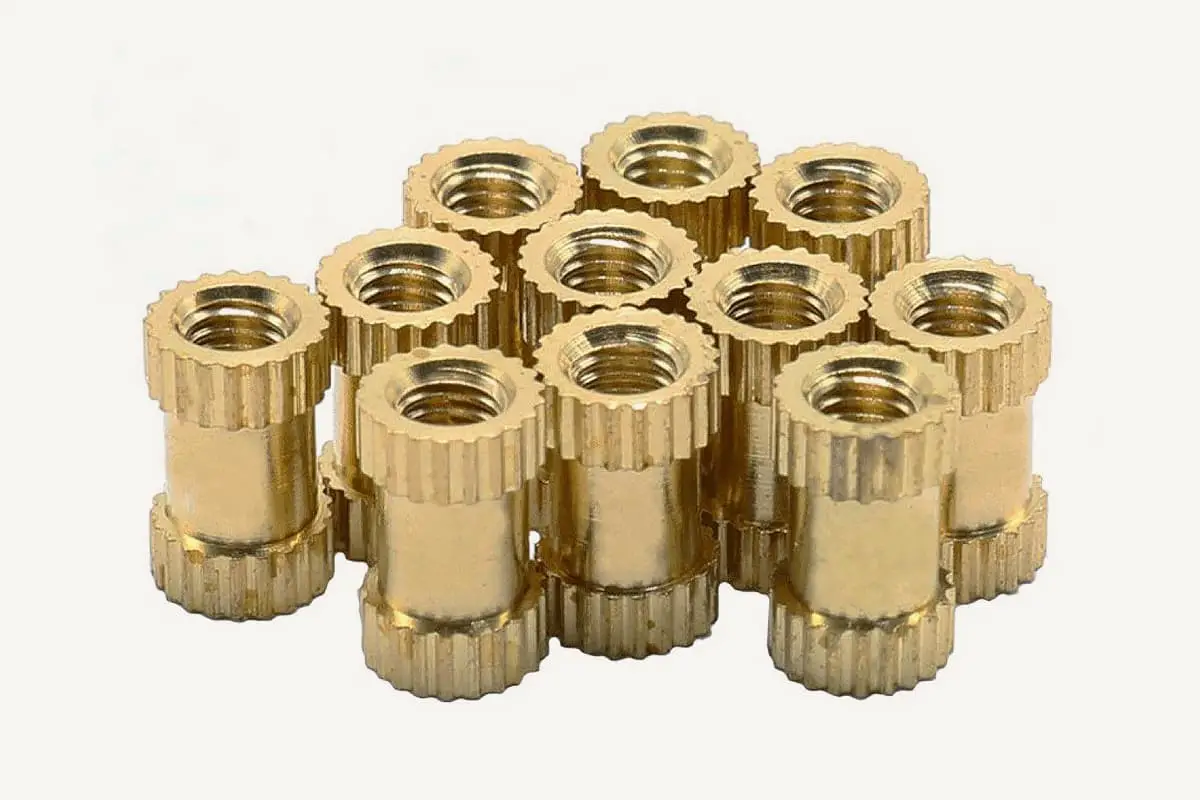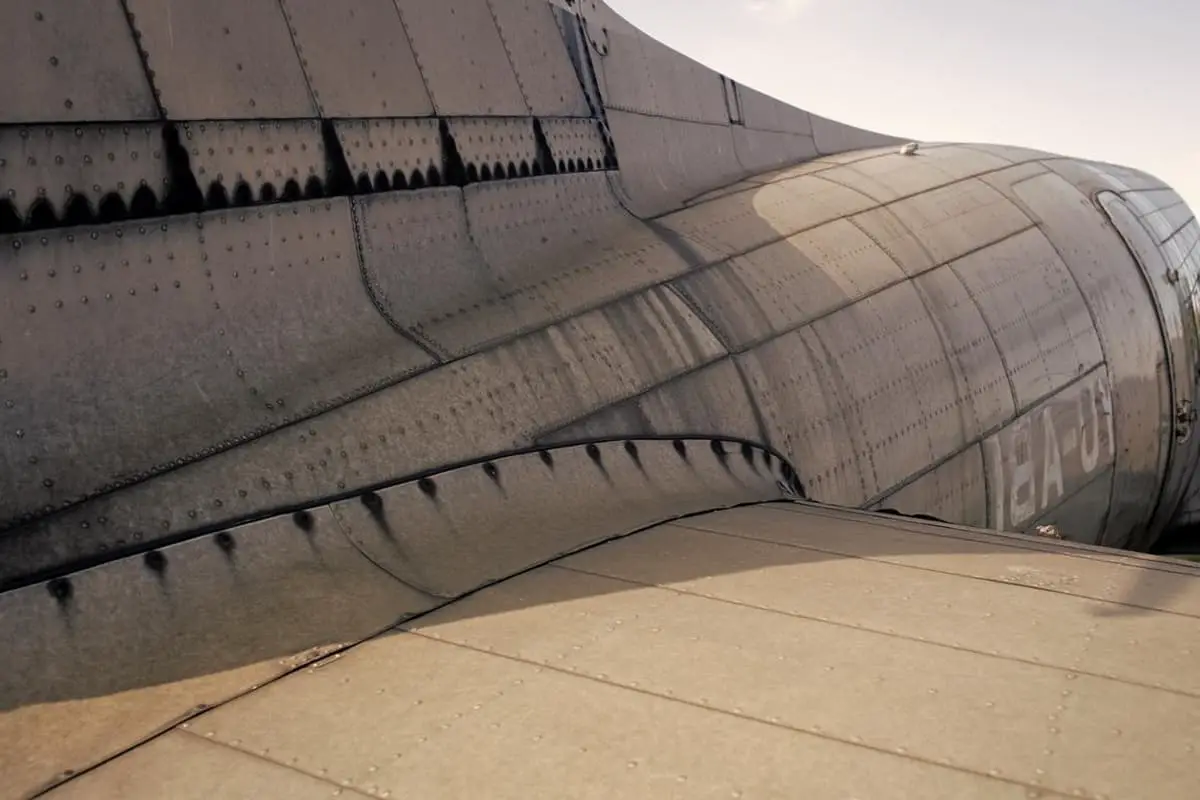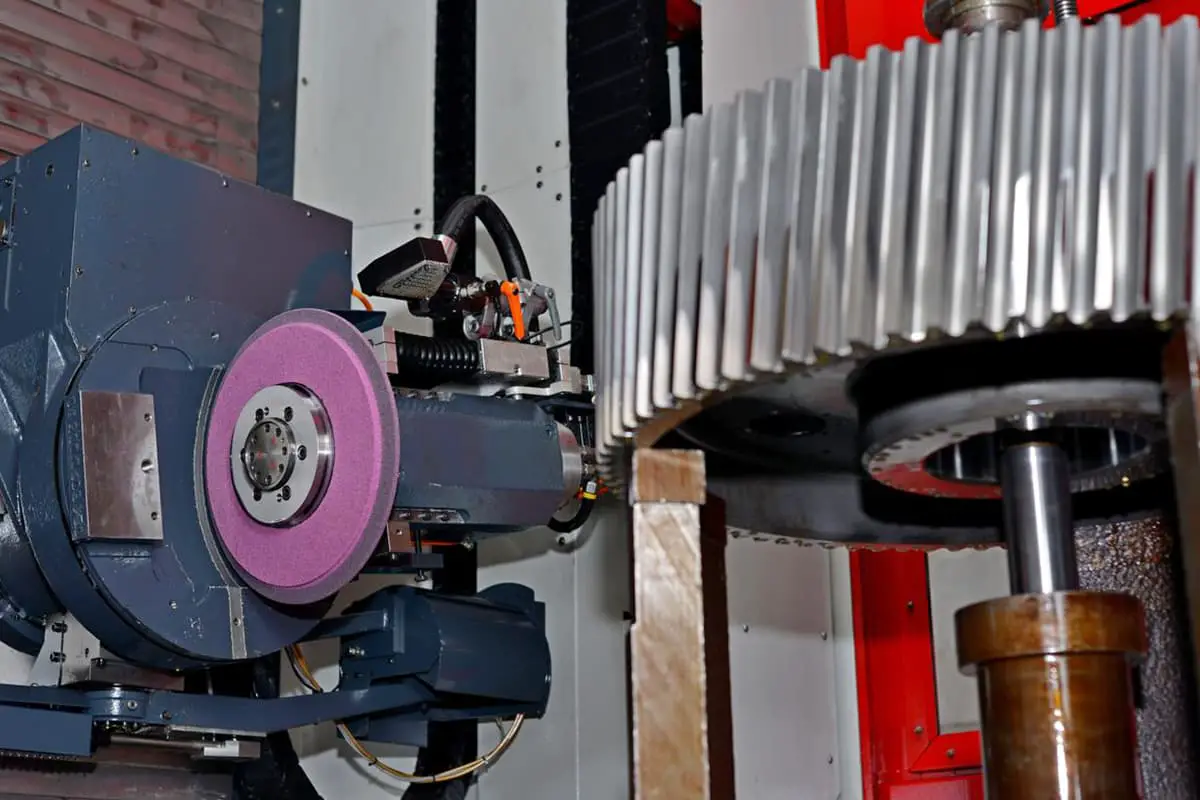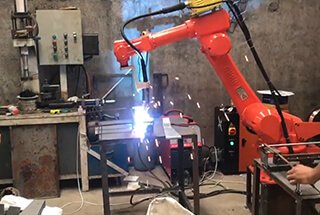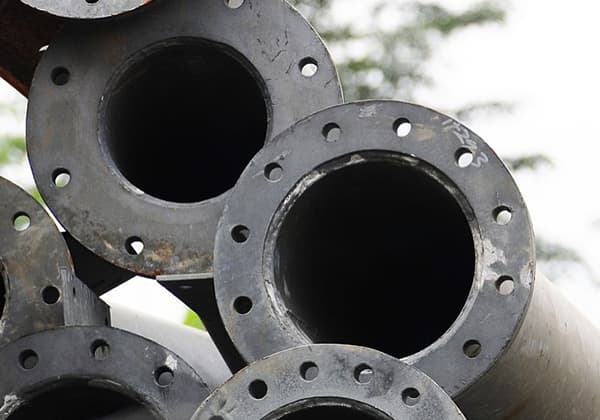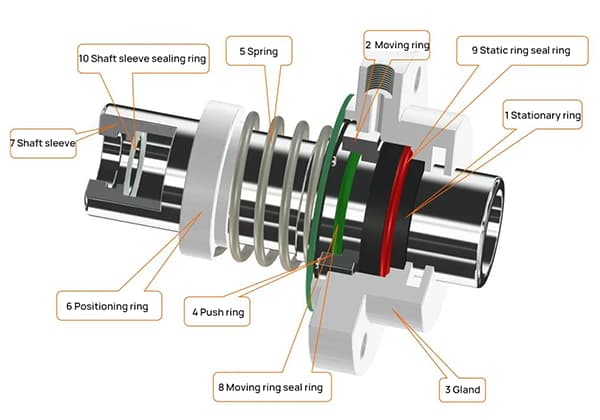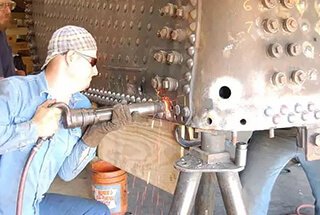
Ever wondered how the integrity of welded nuts and screws in your car is ensured? This article reveals the meticulous process of quality checks and inspections that keep your vehicle safe and reliable. Learn how various tests and standards are applied to guarantee the strength and durability of these crucial components.
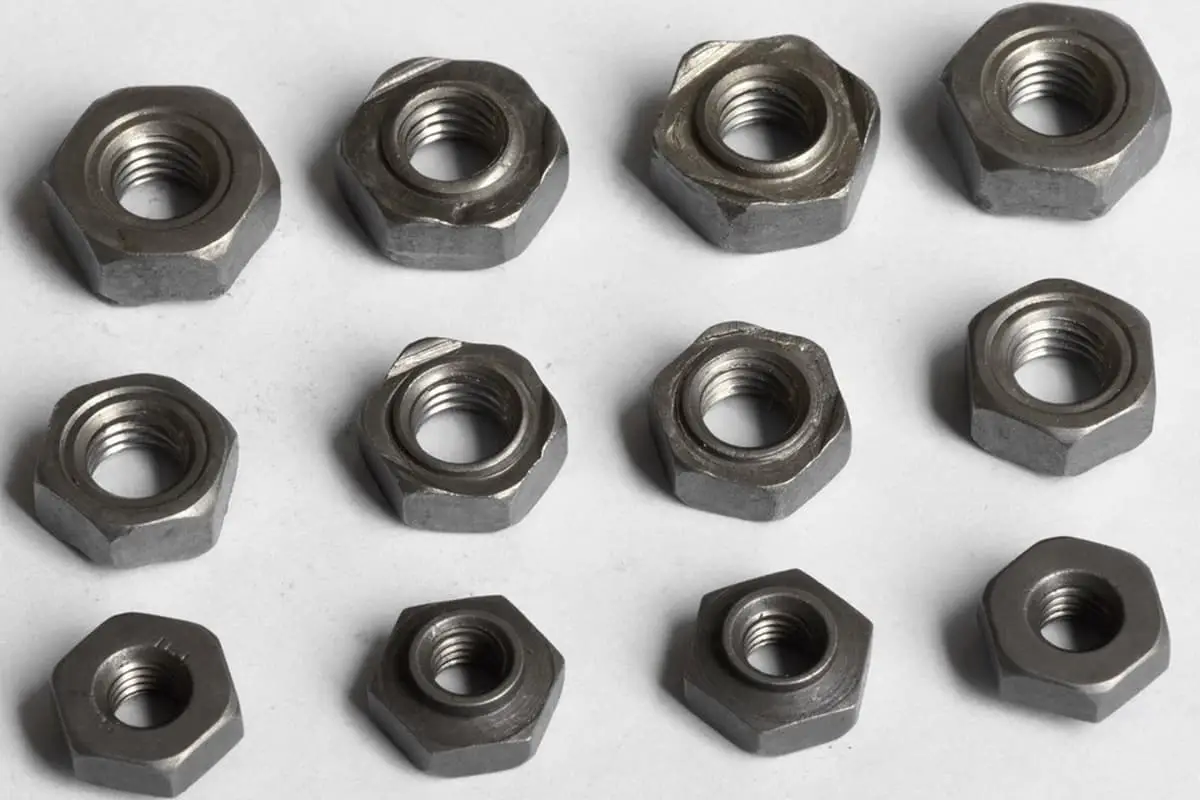
The tightening apparatus for weld nuts and weld screws necessitates assurance of quality during the installation process. Ensuring the integrity of these components is crucial to maintaining the overall reliability and safety of the assembled structure. To evaluate the weld quality and process reliability, it is essential to monitor the installation strength throughout the procedure. This continuous monitoring helps in detecting any deviations or anomalies that could compromise the weld’s integrity.
To further substantiate the reliability of the installation process, additional quality assurance measurements can be integrated into the production workflow. These measures may include real-time data collection and analysis, automated inspection systems, and statistical process control (SPC) techniques. By incorporating these advanced quality assurance methods, manufacturers can potentially obviate the need for subsequent inspections of weld nuts and weld screws, thereby streamlining the production process and ensuring consistent quality.

This standard document addresses the tightening of welded nuts and studs on steel plates and outlines the installation process for bolts. It details the welding installation conditions for the entire vehicle. Appropriate departments are responsible for these inspections. Methods not mentioned in the document should not be used.The manufacturing department requires process inspection. In the event of quality issues, the Quality Department can increase random inspections. For improvements in quality and system, and in response to quality issues, destructive testing of the vehicle frame is necessary.
Boundary Weld: A joining weld is an incomplete fusion weld, where the stud merely adheres to the metal component without the required strength.
To control materials and cycles, all materials, methods, processes, parts, and systems should comply with the applicable legal specifications.
The following content can only be applied to steel plate welding.
Steel Plate Nuts
Category A

Category B

Styles
Style A Style B
Weld Stud
Example: MBN 75 MBN 10391
All welds identified as defective through parameter monitoring (such as color marking) must be repaired. Additional test samples must be separated from the specified random test pieces being produced. Relevant process documents must be referred to when inspecting weld studs and weld nuts. The inspection department needs to record the inspection process in detail, including the methods used to identify defects in the test pieces.
Visual inspections must comply with established evaluation standards. These inspections should be conducted by trained inspectors under appropriate distance and lighting conditions to ensure accuracy and consistency.
Visual inspections must be meticulously recorded in a checklist. Any confirmed defects, such as weld points trending towards the edge, must be immediately addressed and corrected within the production system or welding equipment to prevent recurrence.
The inspection of weld nuts must adhere to the standards outlined in the table below. These standards ensure that all welds meet the required quality and safety criteria.
| Serial Number | Evaluation Criteria: | Example | |
| 1 | Missed welds of studs/nuts |  | |
| 2 | Damage or contamination of studs/nuts (including weld spatter and thread damage) |  | |
| 3 | The gap is inappropriate h > 0.1m |  |  |
| 4 | Deviation from the center position Nuts must not obstruct the installation of bolts. |  | |
| Reference values: For nuts with M ≤ 5, S should be ≤ 1mm. For nuts with M ≥ 6, S should be ≤ 2mm. For arched round nuts, S should be < 0.8mm. | |||
By adhering to these standards, the quality and reliability of the welds can be maintained, ensuring the safety and performance of the final product.
Before conducting torque testing on welded nuts, an external inspection is mandatory. This inspection must adhere to the standards specified in section 7.2.3. The purpose of this inspection is to identify any visible defects or irregularities that might affect the integrity of the weld or the performance of the nut during torque testing.
Torque testing is a critical step to ensure the strength and reliability of welded nuts. The following steps outline the proper procedure:
The detailed standards and procedures for torque testing of welded nuts are provided in section 7.3.3. These standards outline the specific torque values, testing conditions, and acceptance criteria that must be met to ensure the welded nuts are fit for use.
| Torque Measurement | |
| M4 | 6 Nm |
| M5 | 8 Nm |
| M6 | 14 Nm |
| M8 | 32 Nm |
| M10 | 70 Nm |
| M12 | 100 Nm |
Note: Torque inspection must be conducted on square and hexagonal nuts, while the thickness of the steel plate need not be considered for arch-shaped and round nuts.
During the torque inspection process, first tighten the two nuts on the welding stud (as shown in Figure 1), then apply a predetermined Mtest inspection torque with a suitable torque wrench, thereby subjecting the nut to a torsional load (as shown in Figure 2).
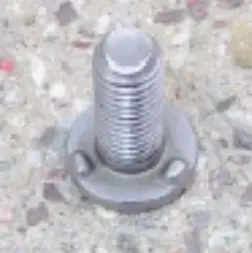
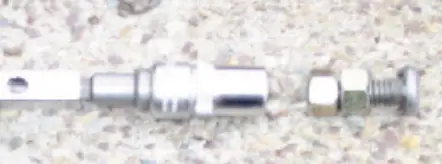
Subsequently, remove the two nuts. It’s plausible to employ an appropriate nut (as shown in Figure 3). Install the nut fully, then perform a torque check.
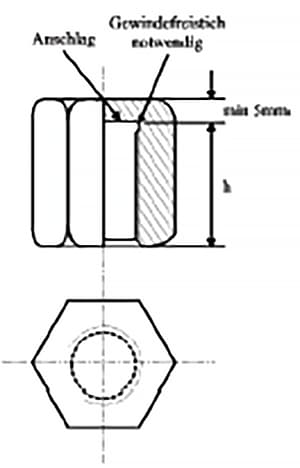
Following torque inspection, the installation of screws and nuts must be assessed based on the descriptions provided in the table below.
| Serial Number | Assessment Criteria | Example | |
| 1 | Screws or nuts must not be loose |  |  |
| 2 | Weld seams cannot exhibit separation |  |  |
| 3 | Weld seams must not be damaged (cracked) |  |
Before conducting torque tests on the circular nuts, visual inspections must be performed first as specified in section 7.2.3. Start by screwing a bolt into the circular nut using a torque wrench with an appropriate torque range.
During the test, the nut is subjected to a torque by the screw. If a crack appears at the seam before reaching the minimum torque, it is deemed insufficient in strength. The testing standard is in section 7.3.3.
Before conducting torque tests, visual inspections need to be performed first as dictated in section 7.2.3. Begin by screwing a bolt into the ground nut using a torque wrench with an appropriate torque range.
During the test, the nut is subjected to a torque by the bolt. If a crack appears at the seam before reaching the minimum torque, the strength is deemed insufficient. The testing standard is in section 7.3.3.
For nuts installed in cavities that do not require regular testing, they can be tested using headless screws. Screw the headless bolt into the nut, and then use a torque wrench with an appropriate torque range to test the nut’s torque.
If a crack appears in the nut before reaching the minimum torque, the strength is deemed insufficient. The testing standard is in section 7.3.3.
| Torque Measurement | |
| M4 | 4 Nm |
| M5 | 5 Nm |
| M6 | 8 Nm |
| M8 | 20 Nm |
| M10 | 50 Nm |
| M12 | 80 Nm |
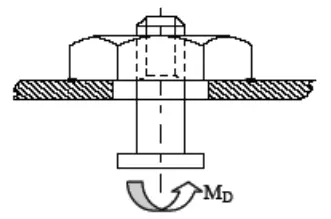
Note: Enhanced screws may be used if necessary.
Destructive testing is a specialized inspection method performed on vehicle frames to enhance quality and investigate quality issues. This type of testing involves intentionally damaging or destroying the component to assess its performance and integrity under stress.
Before conducting destructive testing on grounding nuts, a visual inspection must be performed as standardized in Section 7.3.3.
Destructive torque testing involves using a torque wrench with an appropriate torque range to determine the torque required to unscrew the nut. The minimum separation torque of the weld is listed in Table 6.6.
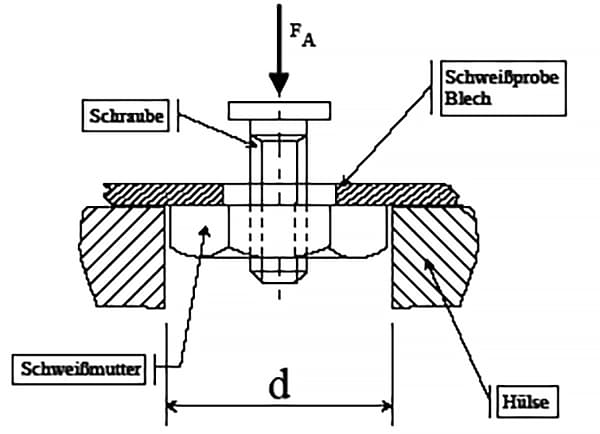
| Hexagonal Nut | Square Nut | Diameter (mm) | Plate Thickness (mm) | Length (mm) |
| M3 | 10 | 2 | 40 | |
| M4 | M4 | 12 | ||
| M5 | M5 | 13 | ||
| M6 | M6 | 14 | ||
| M8 | 18 | |||
| M8 | 21 | |||
| M10 | 23 | |||
| M12 | M10 | 27 | ||
| M14 | M12 | 31 | ||
| M16 | M14 | 33 |
For components not listed in the table, such as round screws or nuts, the inspection equipment must be similar to the above.
The components mentioned in section six.
| Thread Diameter | Plate Thickness | Compressive Force |
| M4 | 0.75 1.0 1.5 | >1.3kN |
| M5 | 0.75 1.0 1.5 | >2.0kN |
| M6 | 1.0 1.5 2.5 | >2.5kN |
| M8 | 1.0 2.0 3.0 | >3.0kN |
| M10 | 1.25 2.0 3.0 | >4.0kN |
| 7/16’’ | 1.25 2.0 3.0 | >5.0kN |
| M12 | 1.5 2.0 3.0 | >6.0kN |
Excessive pressure that extends beyond the scope needs to be agreed upon with the relevant responsible departments.
The peel test inspection is a crucial method for evaluating the integrity of welded steel plate nuts. This method involves peeling the nut off the steel plate using appropriate tools such as a hammer, chisel, or tension testing equipment. The objective is to ensure that the weld points maintain their dimensions and integrity post-welding.
In certain special cases, a metal cross-section inspection is utilized to assess the fastening state of bolts and nuts. This method provides a detailed view of the internal structure and integrity of the fastening.
As mentioned in Section 6, for the parts.
| Destructive Testing | Non-Destructive Testing | ||
| Thread Diameter | Plate Thickness | The torque setting in the welding system. | Monitoring the torque during the part inspection process, which is related to the thickness of the plate. |
| M4 | 0.7 1.25 1.5 | 13 Nm 13 Nm 16 Nm | 6 Nm 8 Nm 8 Nm |
| M5 | 0.7 1.25 1.5 | 20 Nm 29 Nm 29 Nm | 8 Nm 10 Nm 10 Nm |
| M6 | 0.8 1.5 2.0 | 24 Nm 33 Nm 34 Nm | 14 Nm 20 Nm 20 Nm |
| M8 | 1.0 2.0 3.0 | 58 Nm 61 Nm 60 Nm | 32 Nm 38 Nm 38 Nm |
| M107/16’’ | 1.25 2.0 3.0 | 112 Nm 133 Nm 125 Nm | 70 Nm 90 Nm 90 Nm |
| M12 | >1.5 | 140 Nm | 100 Nm |
Note: The inspection standard in 6.2.3 is specifically for thin steel plates.
The inspection of random samples must be recorded. The results of random inspections must be preserved for a specified period.
If defects are discovered during the inspection process, they must be immediately rectified. Additionally, the relevant systems must be inspected or corrected.
All vehicles currently experiencing the same issues must be repaired. Defective rivet nuts must be removed, and to secure new screws or nuts, the surface of the plate must be kept clean and flat.
For individual cases where screws and nuts cannot be replaced, suitable repair methods must be established through QPQ (Quench-Polish-Quench) and EP/CSV (Electropolishing/Chemical Surface Treatment).
The inspection department also needs to check the inspection tools.
The torque wrenches used must meet the following conditions:

